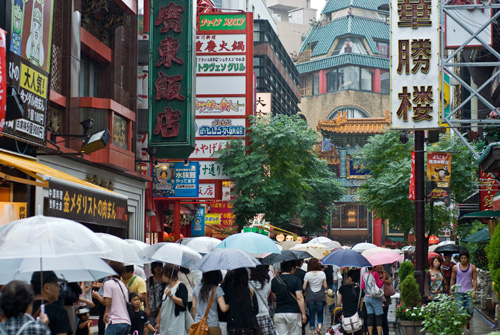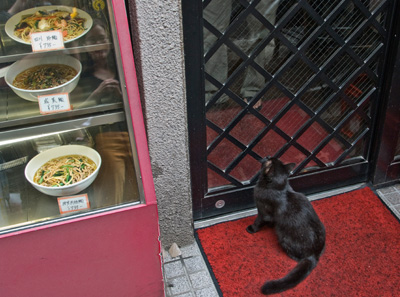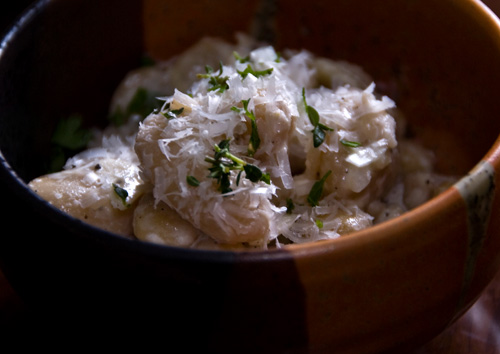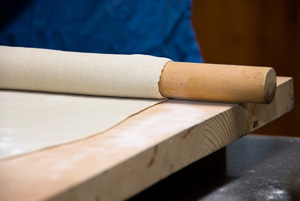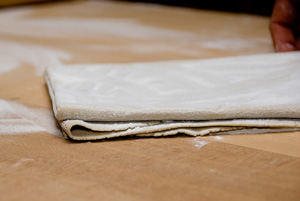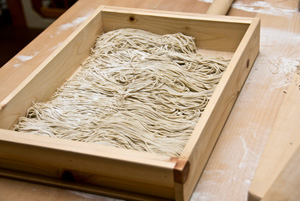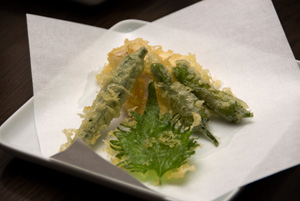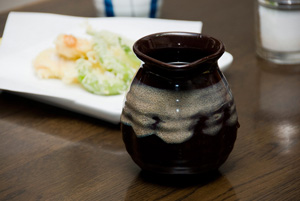After our trip to Yokohama Chinatown, we returned to Tokyo. We did some shopping in the sporting goods district in the Jimbocho area. We returned to Ueno station and had time to grab a bowl of ramen for dinner before we had to catch our train home. We went to Ichiran, a well known ramen shop that specializes in tonkotsu, Kyushu’s rich pork broth for ramen. The chain is based in Hakata, the home of tonkotsu.
At the door, you tell the hostess how many seats you’ll need at the counter while you buy your tickets for your ramen and toppings. The seating area is actually a long counter with individual “stalls” to provide customers with some privacy from the patrons to their right and left while they eat. After you’re seated, you fill out a sheet with options to personalize your ramen: how rich do you like your broth, how spicy, a lot of onion or a little, how well done do you like your noodles, and so on. You place your sheet and meal tickets on the bar in front of you, and a server comes to the other side of the counter and takes your tickets. A few minutes later, you recieve a steaming bowl of ramen prepared to your specifications. Since you’ve already payed, just eat and leave when you’re finished. Someone will probably be waiting to take your seat as soon as you stand up.
The menu is fairly bare bones: it’s pretty much just the bowl of ramen and some optional add-ins such as a soft boiled egg, kikurage (wood ear mushrooms), extra pork, extra noodles, and some drinks. What they lack in variety they make up for in quality. I really recommend the soft-boiled egg (han-yude tamago), which is cooked just right here. Alex got the kikurage with his ramen, which is pictured above. The broth is rich, creamy, and flavorful and the noodles are tasty too. If you have an average apetite, this bowl of ramen will surely fill you up, and if you eat more than the average Joe, you can order extra noodles. If you’re sensitive to spice like me, look out for the chili sauce that you can add to the broth: it’s hot!
The restaurant is located in the Ueno Station building, so it was really convenient for us to grab a quick dinner here before heading home. If you find yourself in Ueno with some time to spare, I recommend you check out Ichiran for a bowl of delicious tonkotsu ramen. It’s even open 24 hours a day, how convenient!

